Mountain House in Mist: Translucent Reading Space on Stilts Overlooks an Ancient Forest
Tucked into a hillside within the ancient mountain forest of Jinhua, Zhejiang Province, China, a translucent reading room on stilts glows like a massive lantern when the sun sets. “Mountain House in Mist” is a thoughtfully designed public space that meets the needs of the surrounding village while making the absolute most of its small building plot and setting.

From the outset of the project, Chinese firm Shulin Architectural Design wanted to create a space that felt both contemporary and deeply connected to the historic and cultural roots of the surrounding village. The structure sits on a narrow strip of land on the terraced mountainside adjacent to centuries-old courtyard houses made of rammed earth, a vernacular architectural style that first emerged during the Qing Dynasty around 1200 C.E. A nearby public square and walking path give the reading room an ideal central location, but its the stilts that really help it shine. After all, if the single-story structure had been built at ground level, neighboring buildings would have blocked out views of the area’s stunning natural scenery.
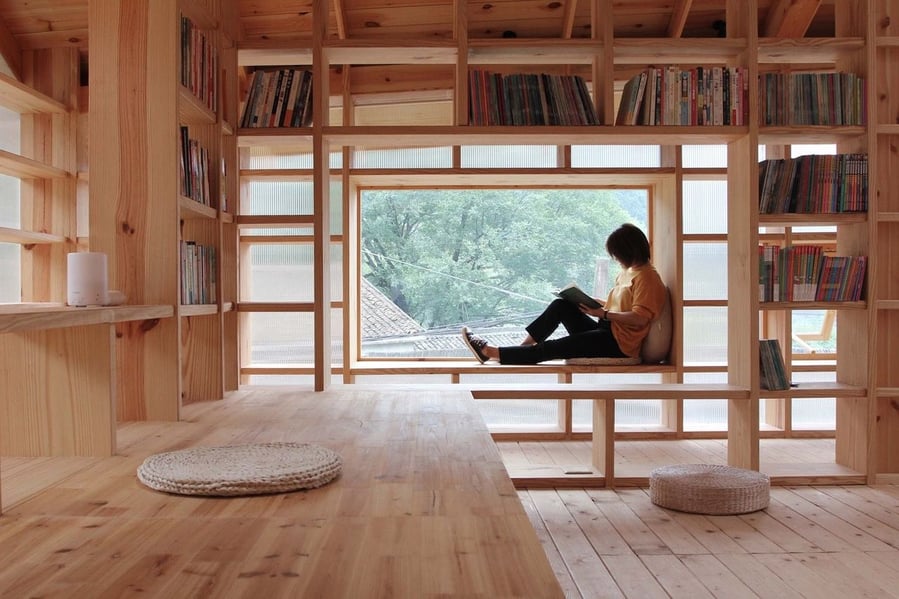
Thanks to the architects’ brilliant choice to elevate the building in this way, it feels as light as a cloud, and it only marginally increased construction costs while also allowing the project to have a light footprint on the land. The translucent walls create a space that’s flooded with natural light during the day for a bright and cheerful effect while still allowing it to retain a subtler, more intimate feeling at night. Meanwhile, the lower level offers a protected space for anyone who might walk by. They can pause, sit at a picnic table, order a drink from a tiny beverage bar built into one end, and enjoy another one of the building’s cooler features: a reflecting pool set under an opening in the roof.
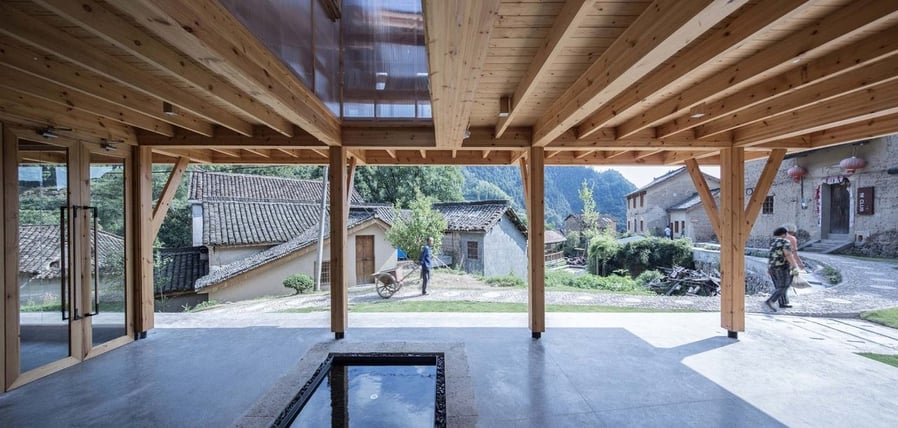
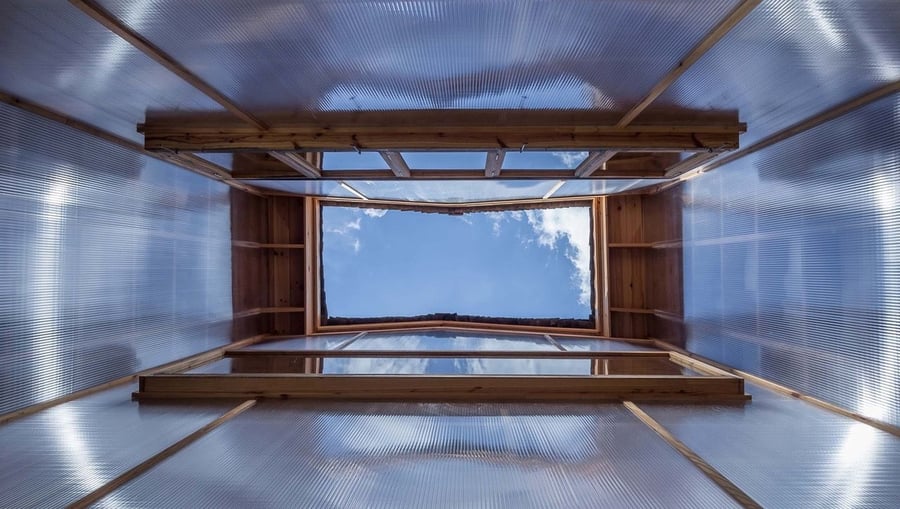
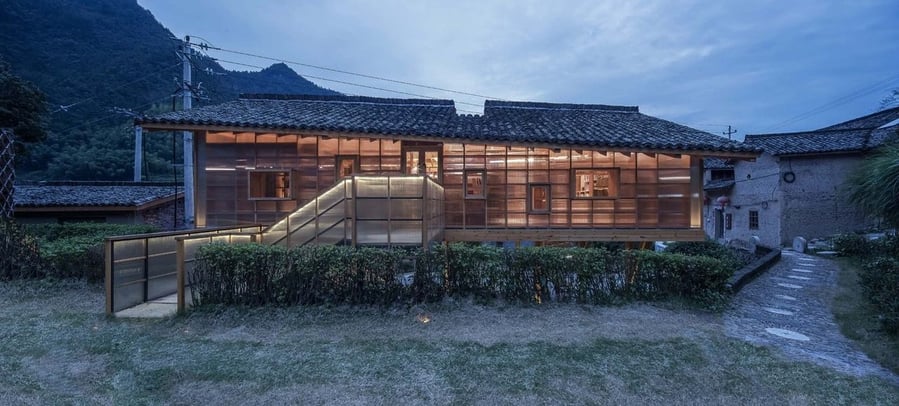
“On rainy days, water rain falls from the patio into the pool, and the sound can be heard inside the house; while when the sun shines directly, it creates a unique light and shadow effect,” say the architects. “A patio is designed in such a small place because it makes the house more relevant to nature, time, and space. This is a sense of time in the house from my perspective. The setting of the patio looks like it is waiting for a certain time – for the sun to cast in a beautiful shadow, for the rain to drip ripples, or for the breeze to blow in.”
“At those moments, the patio is set as a special space waiting for its significance of being created. The essence of rural architecture as I understand it is a state in which people and space, people and nature, and people and time coexist harmoniously. This patio makes it happen by including sunlight, rain, and air into the interior space.”

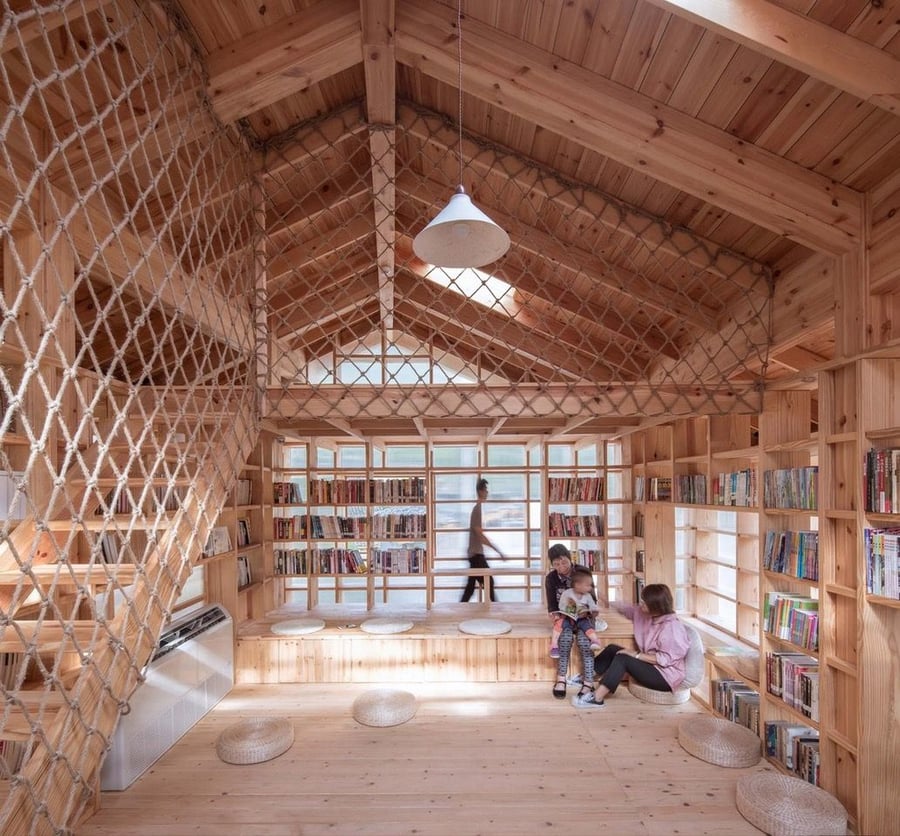

The reading room itself offers bookshelves built into almost every wall, from floor to ceiling, along with built-in benches, window nooks, a loft, and a long book-lined corridor that traverses the space. It’s also at the same level as a flat area on the hillside behind the building, which itself has been turned into a playground for children.

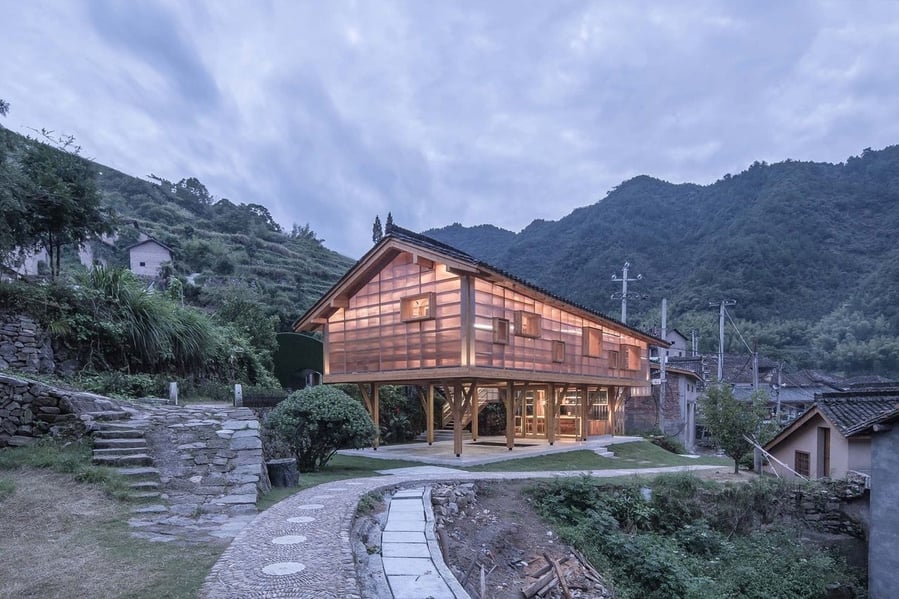
The architects add that “as the reader wanders around in the corridor, their horizon opens together with the entrance, and the boundaries disappear. When standing on the other side of the entrance, people can see through the window and watch others reading books on the balcony, and farther away, the hills and forests. The perspective from different layers creates communication between people, space, and the environment.”




